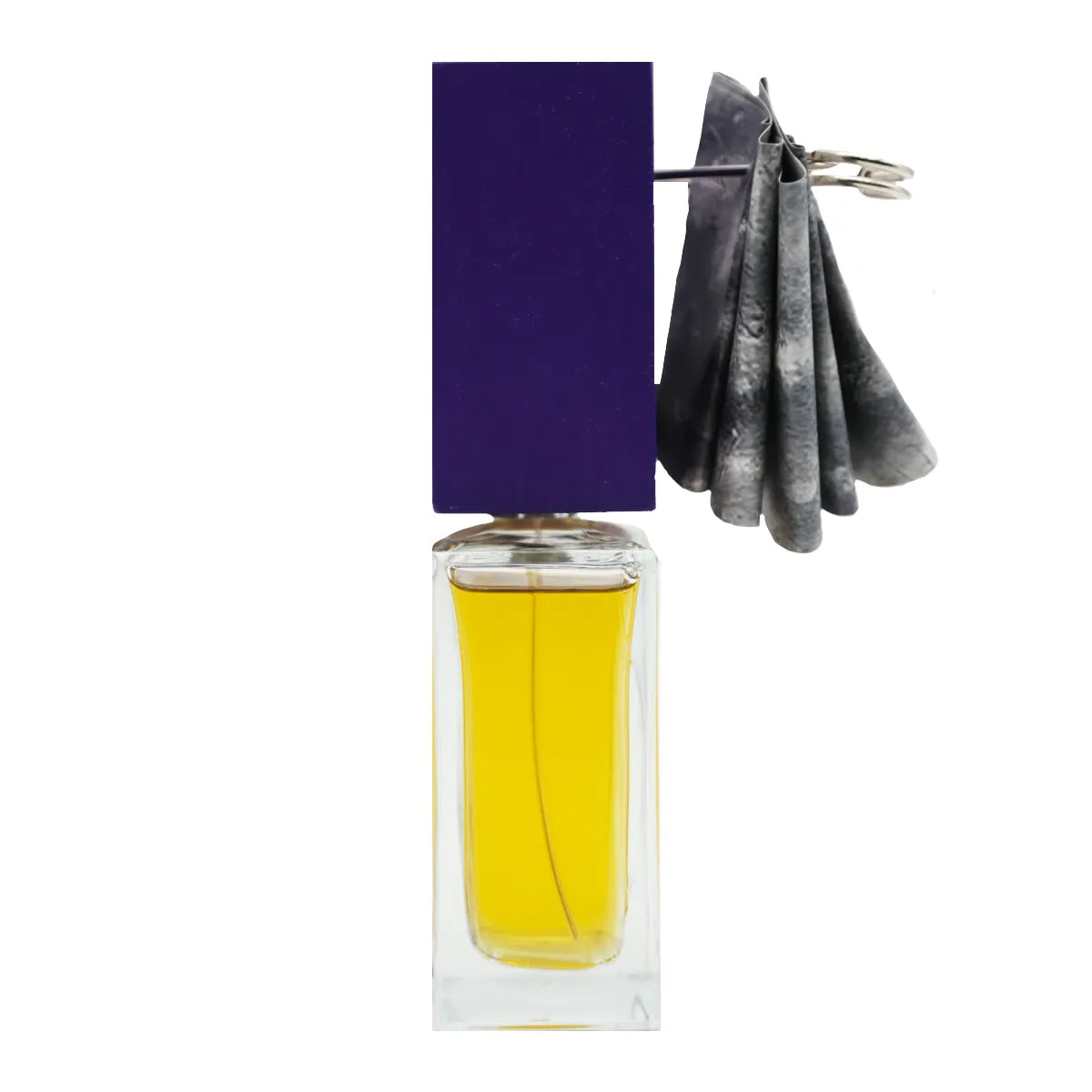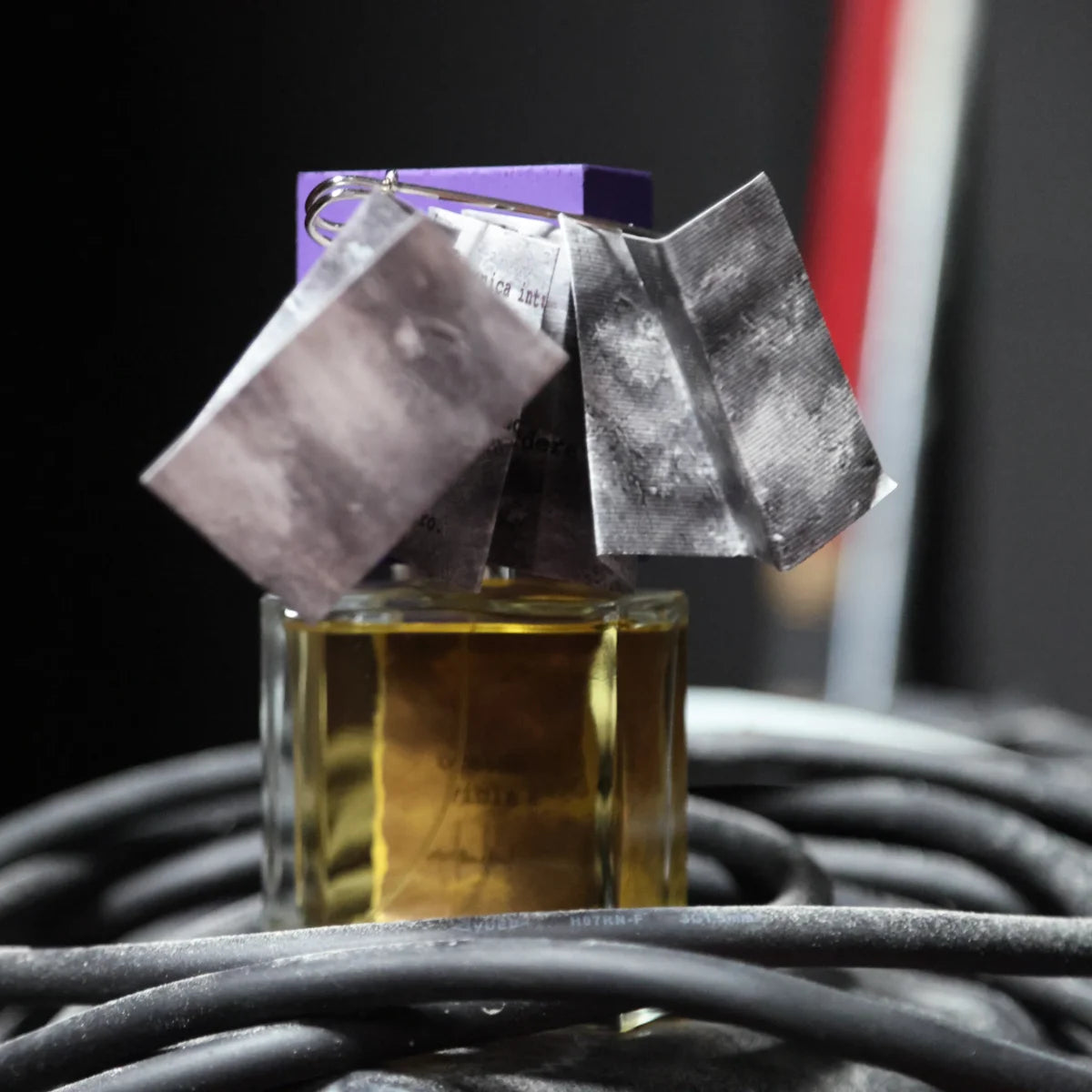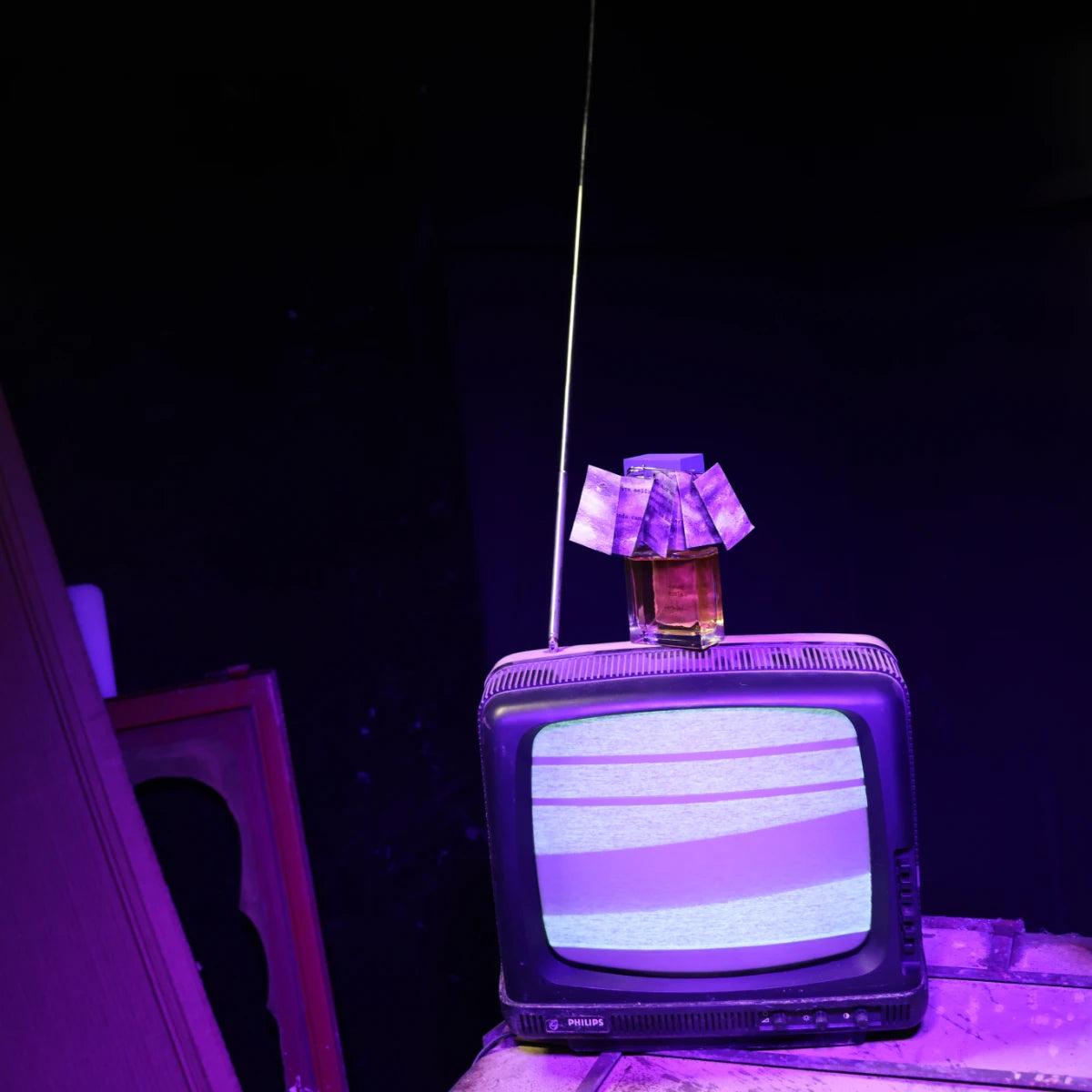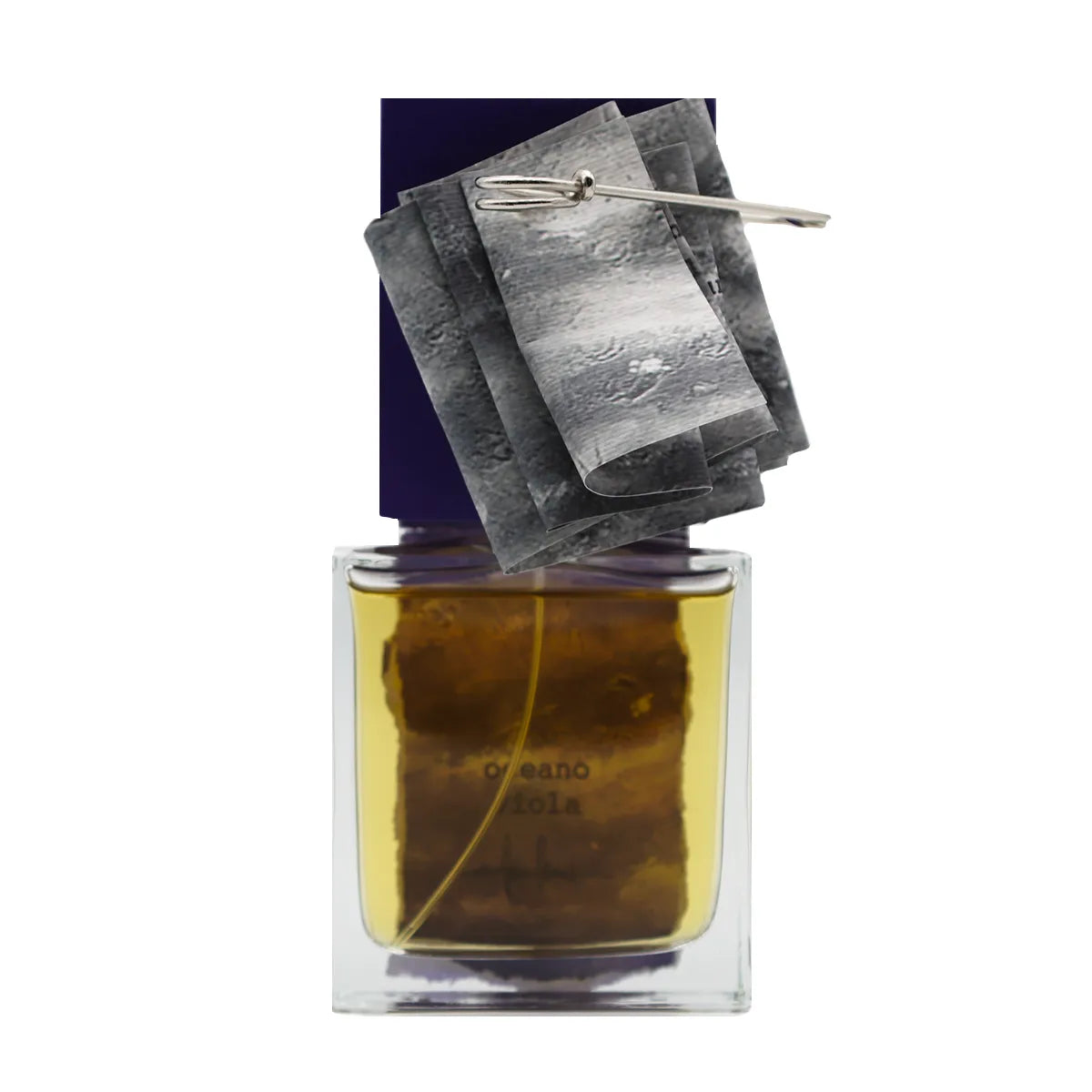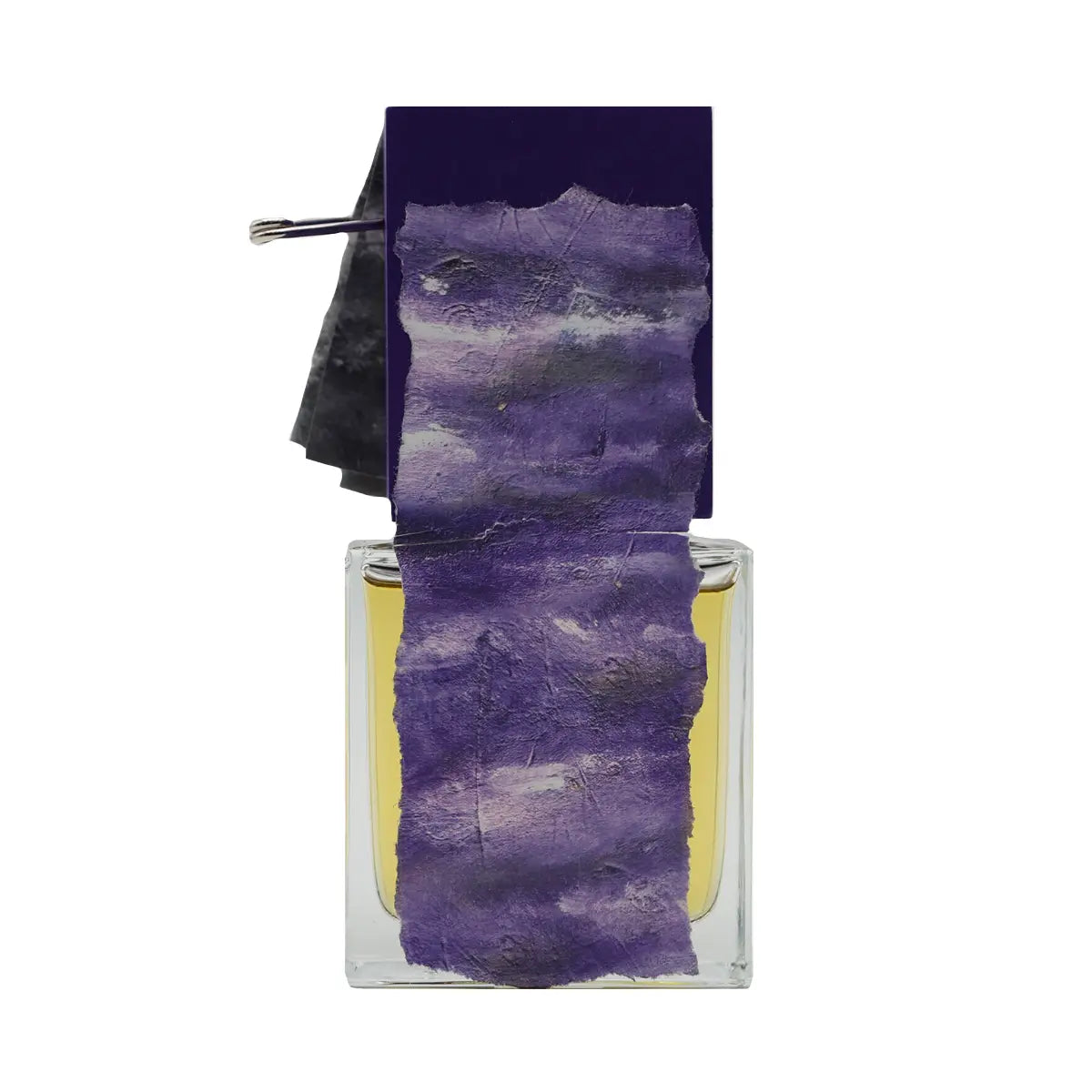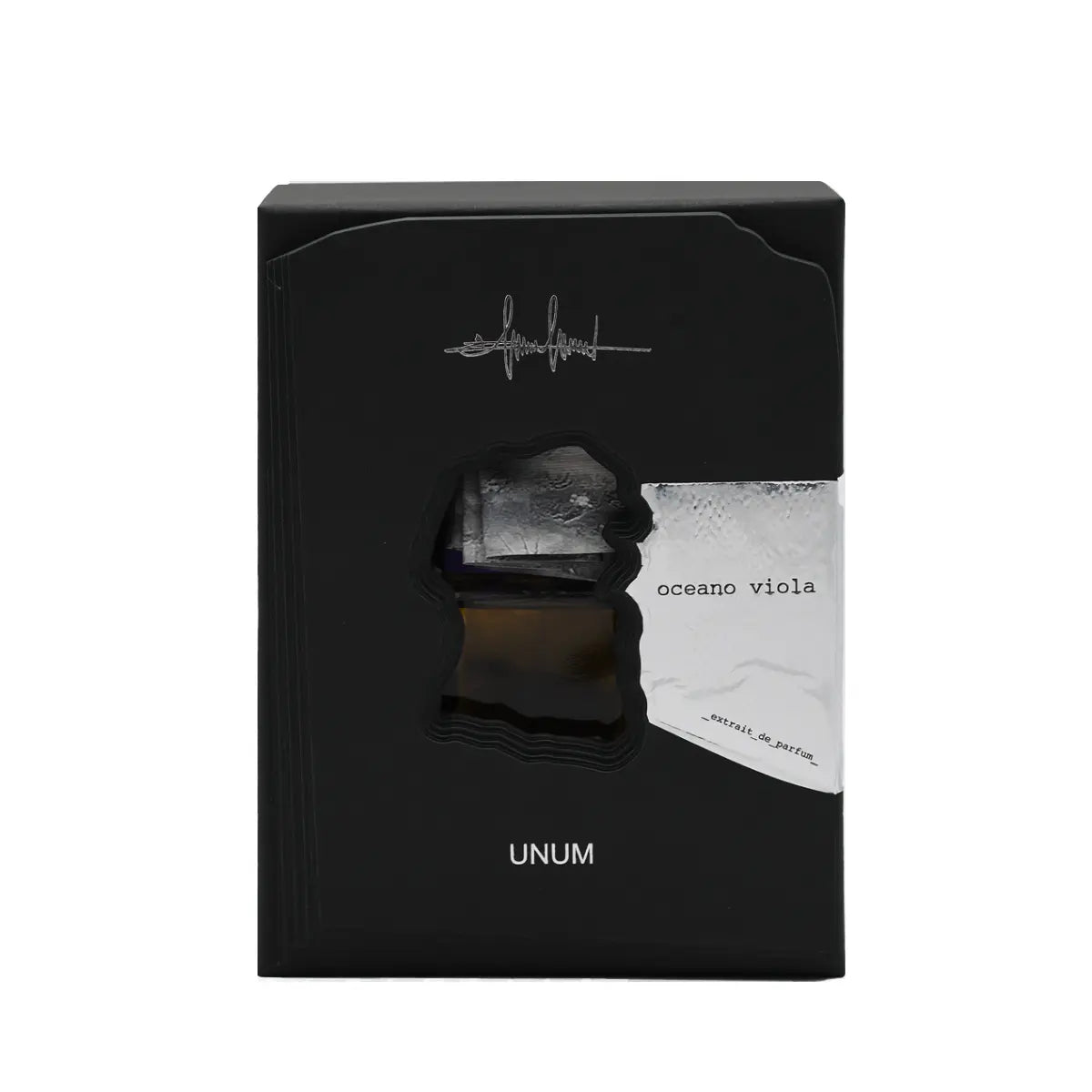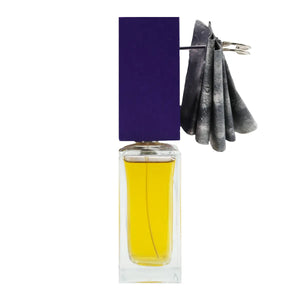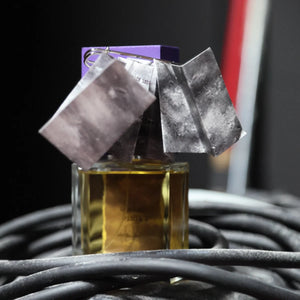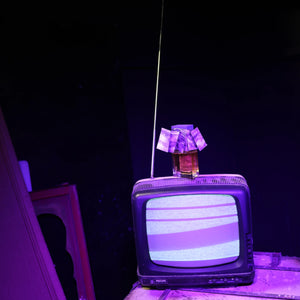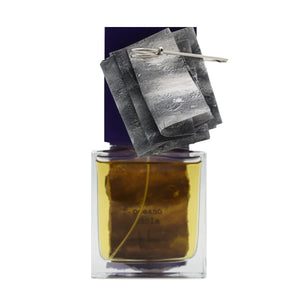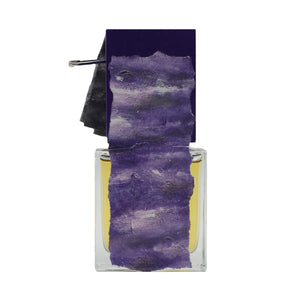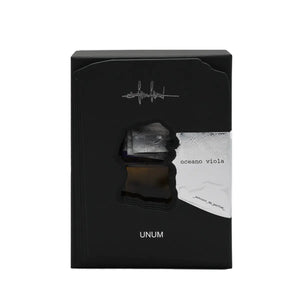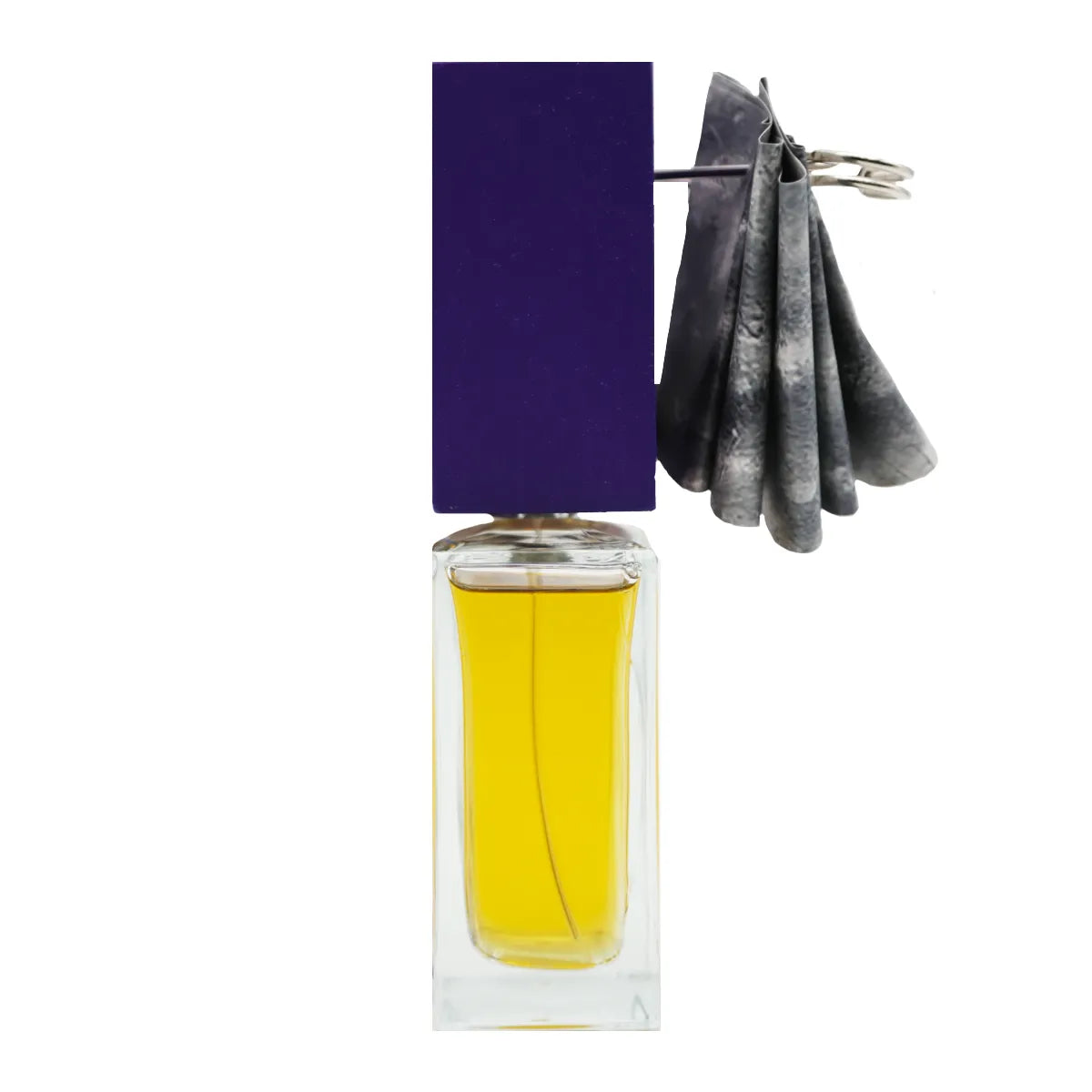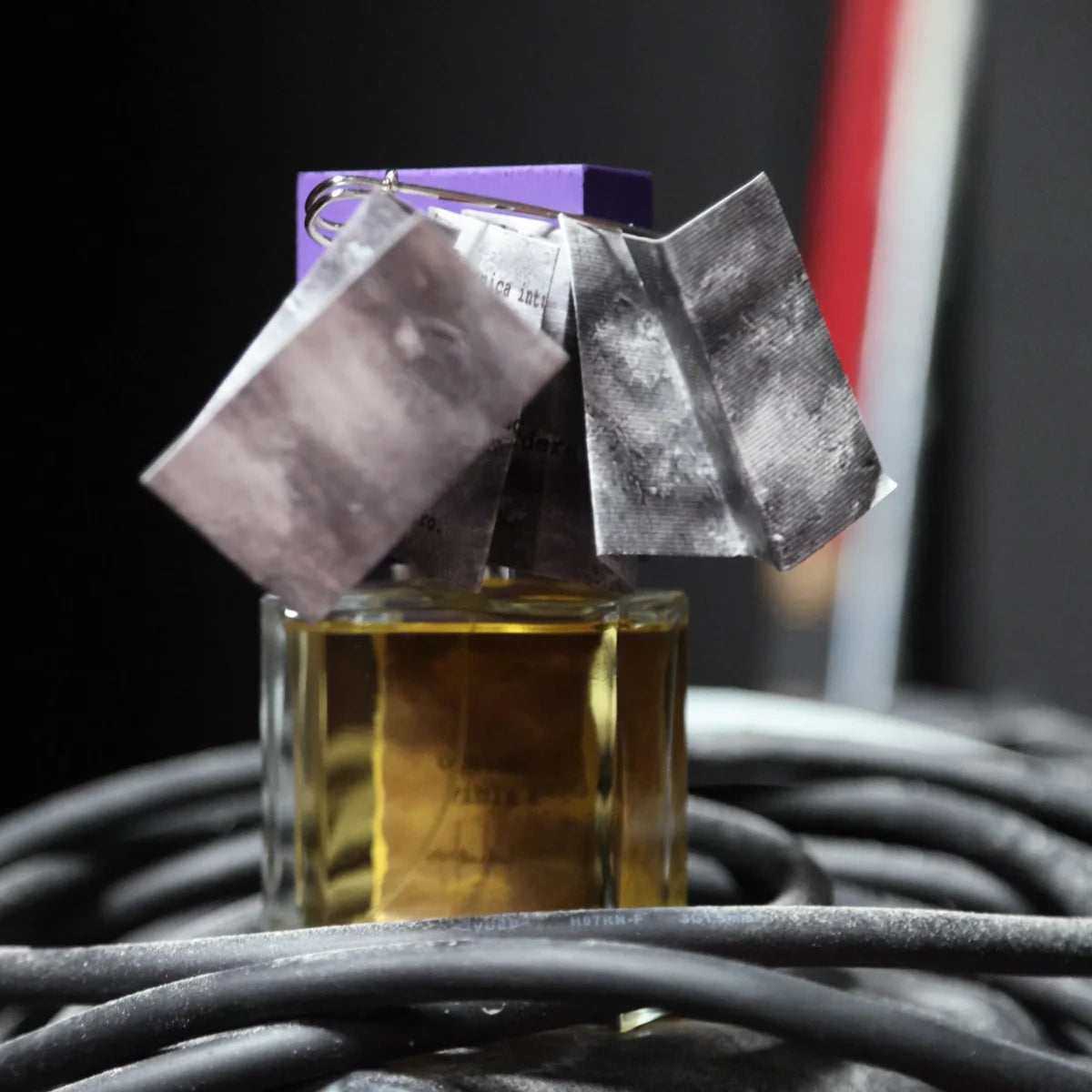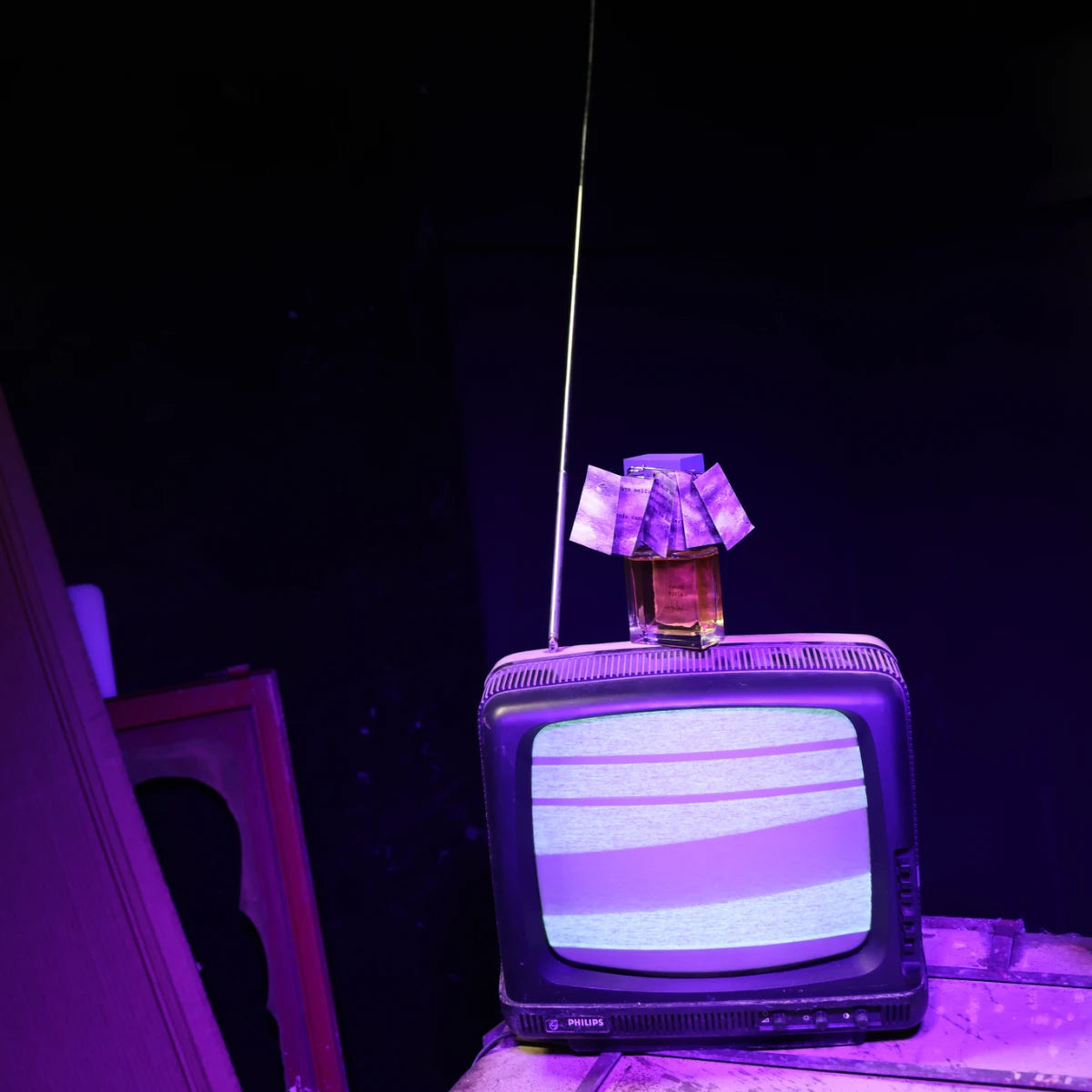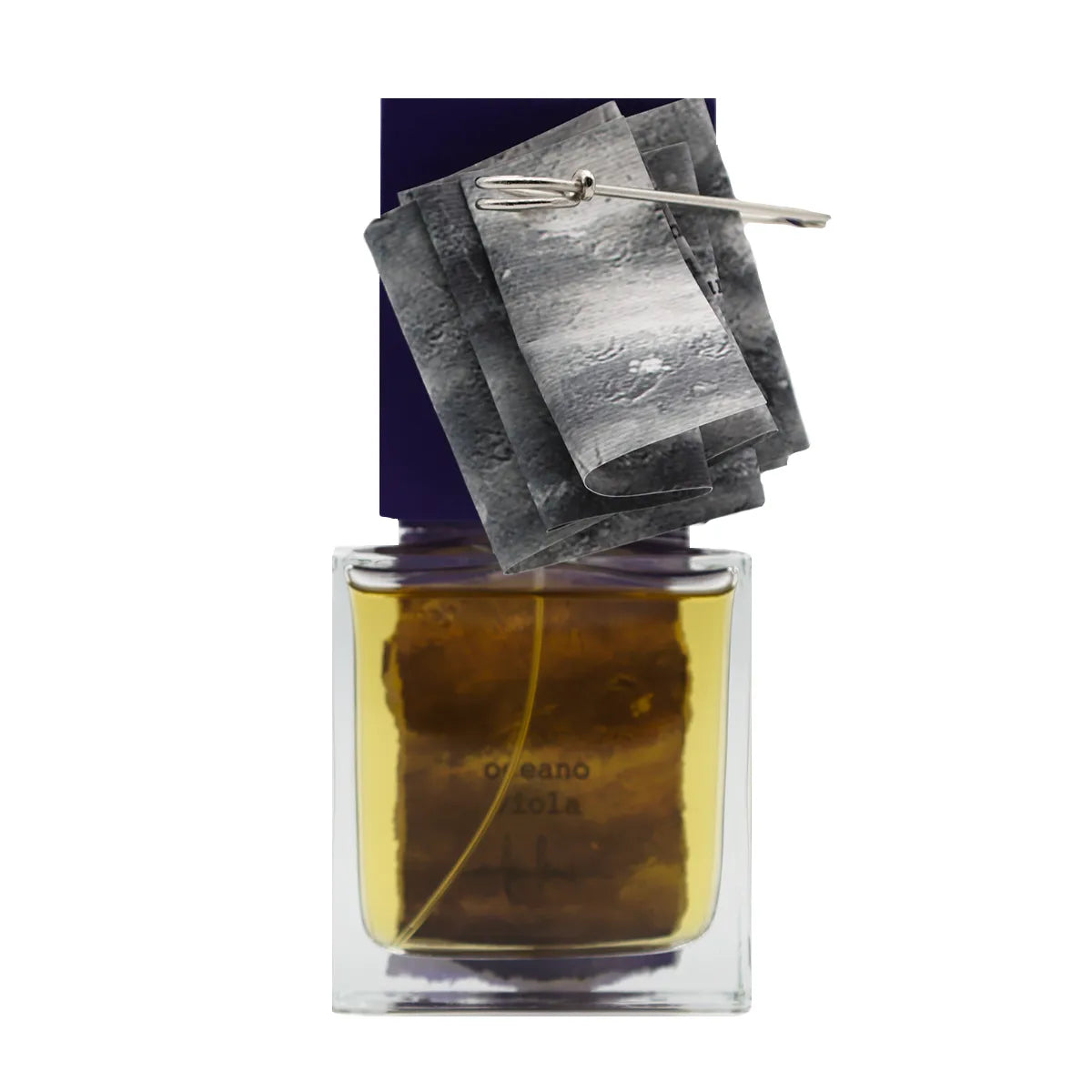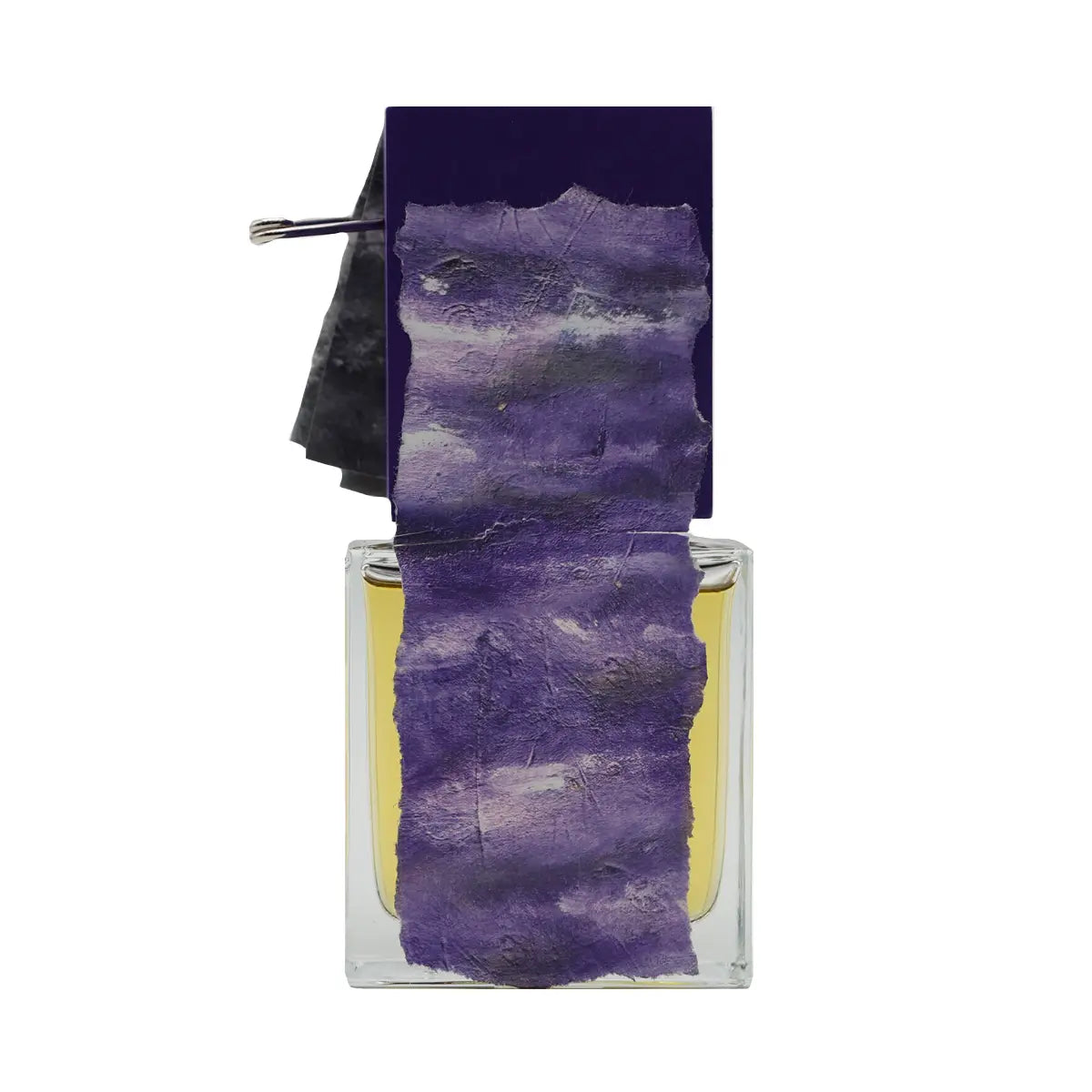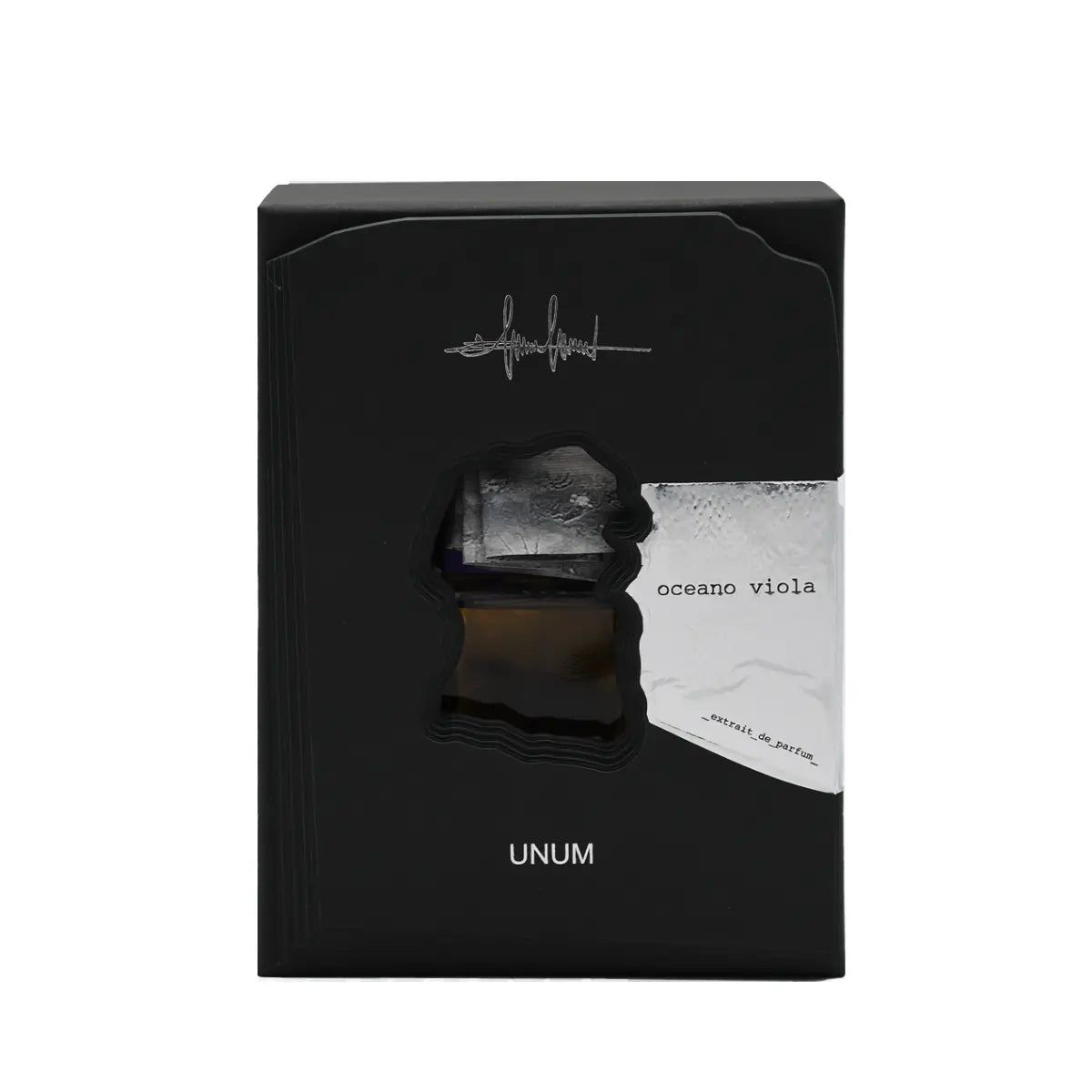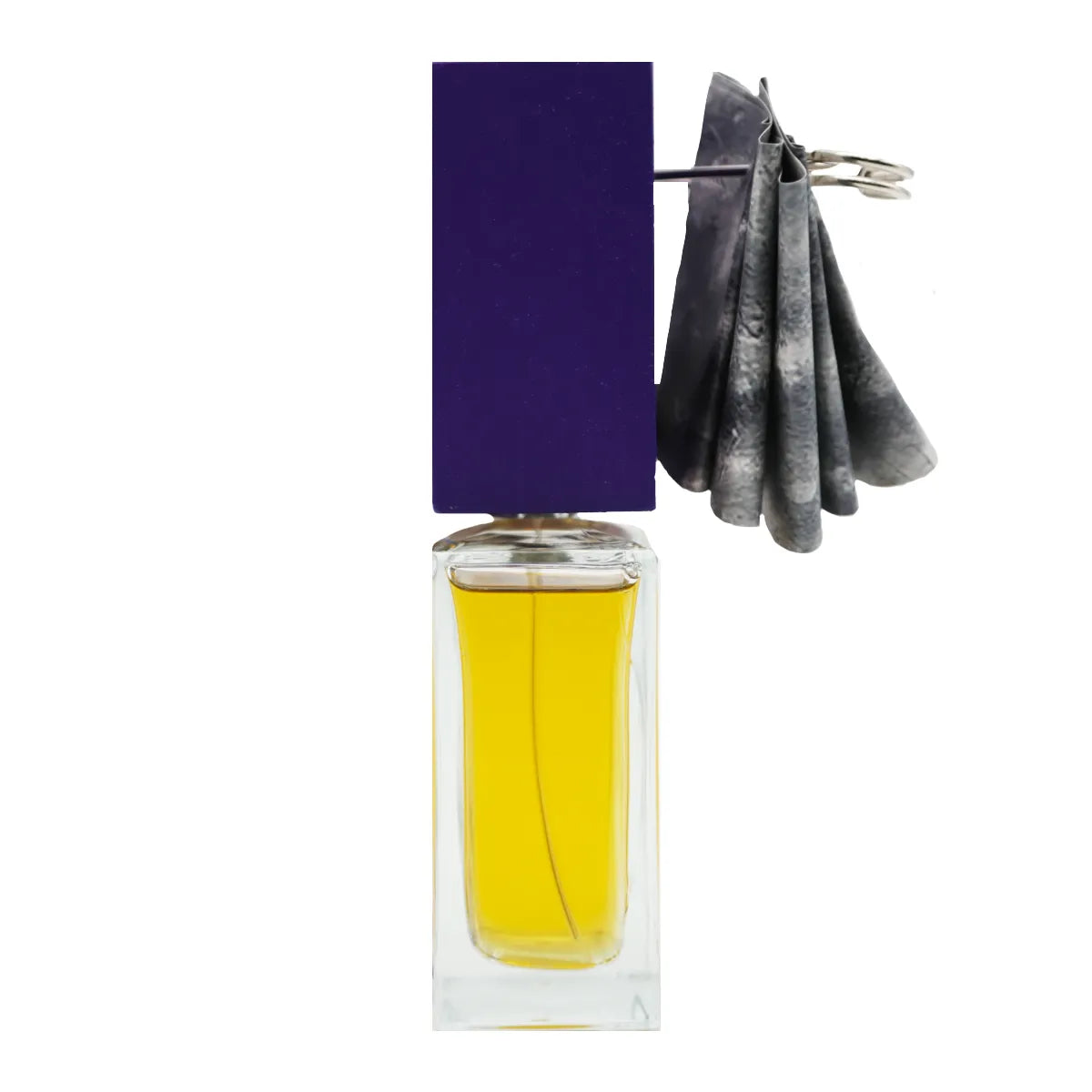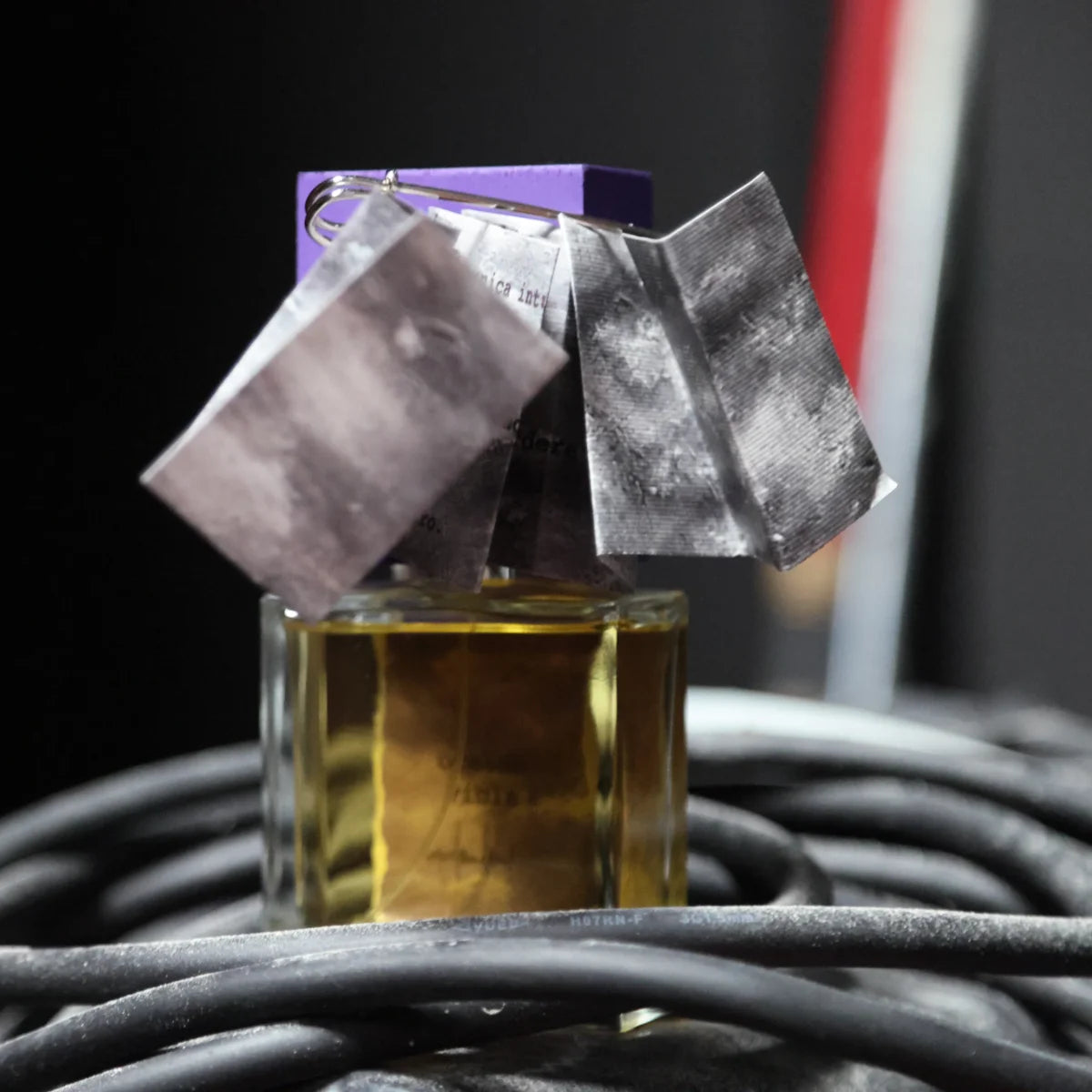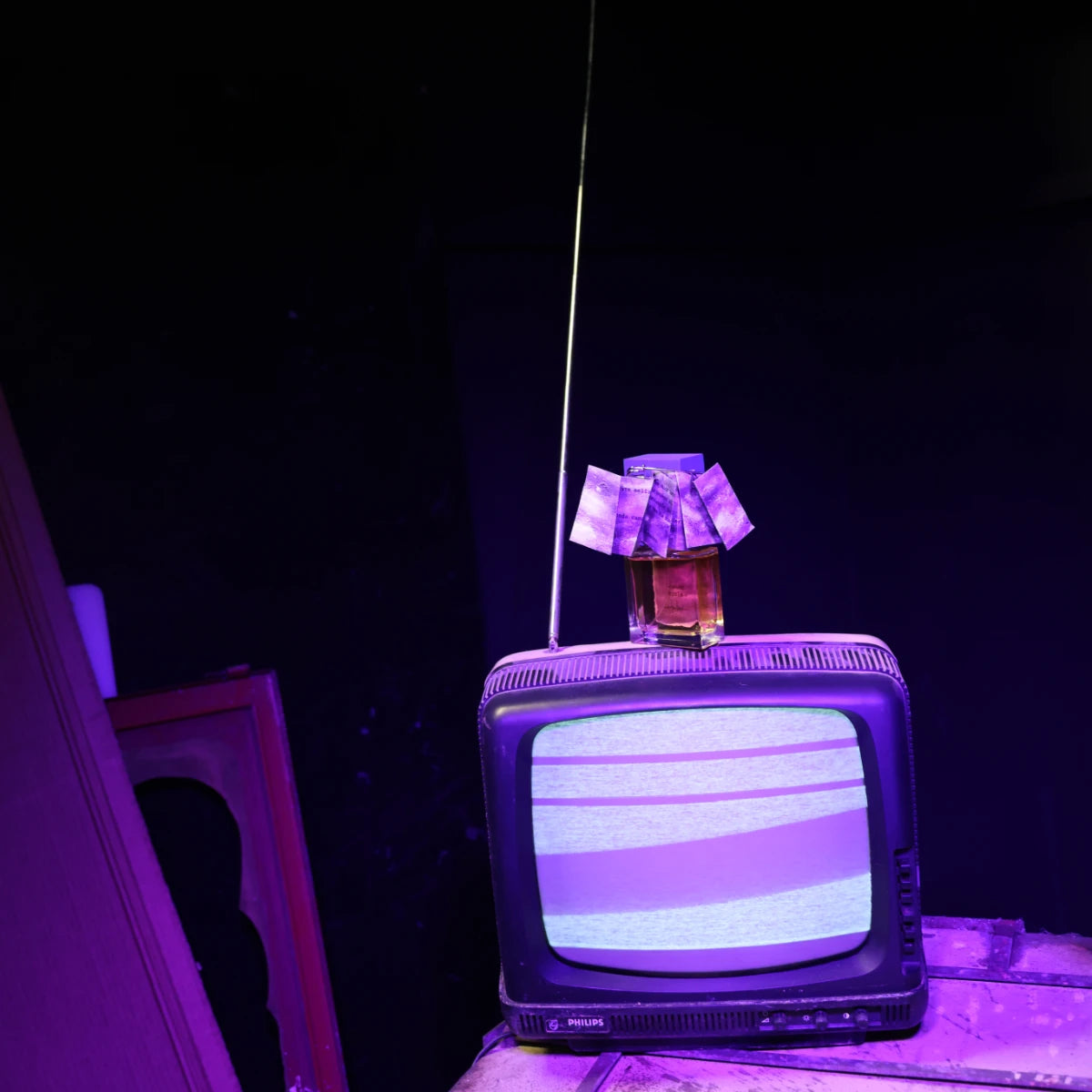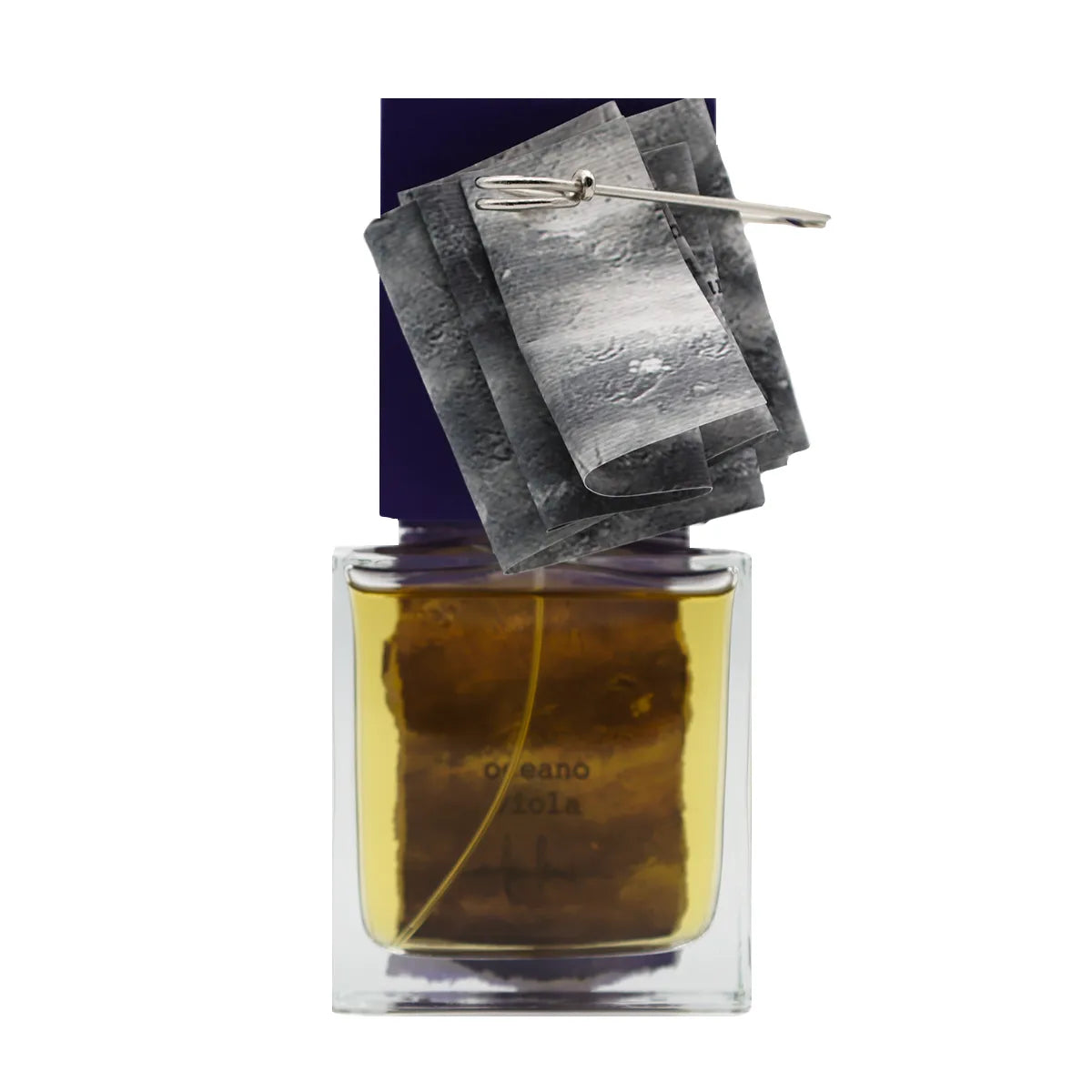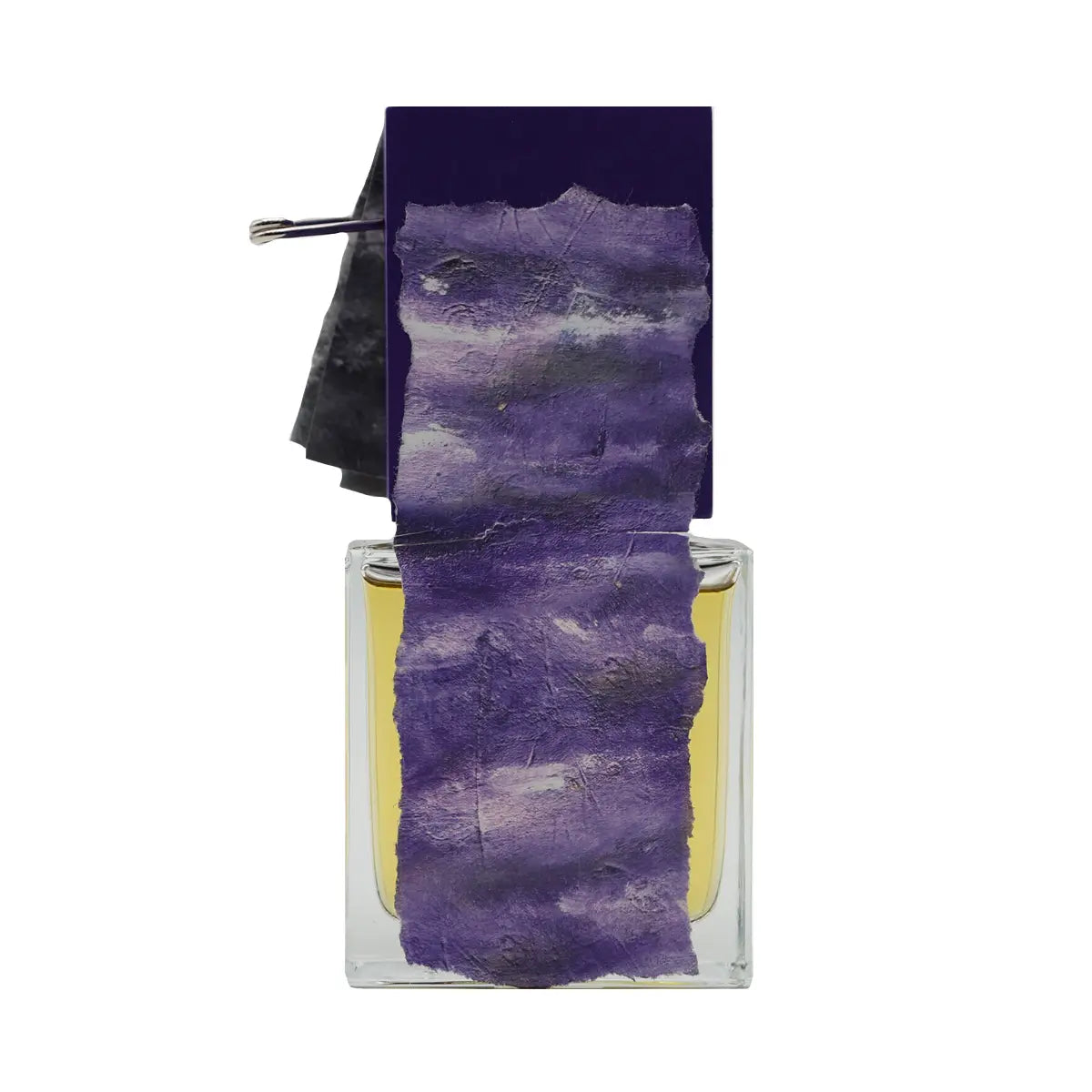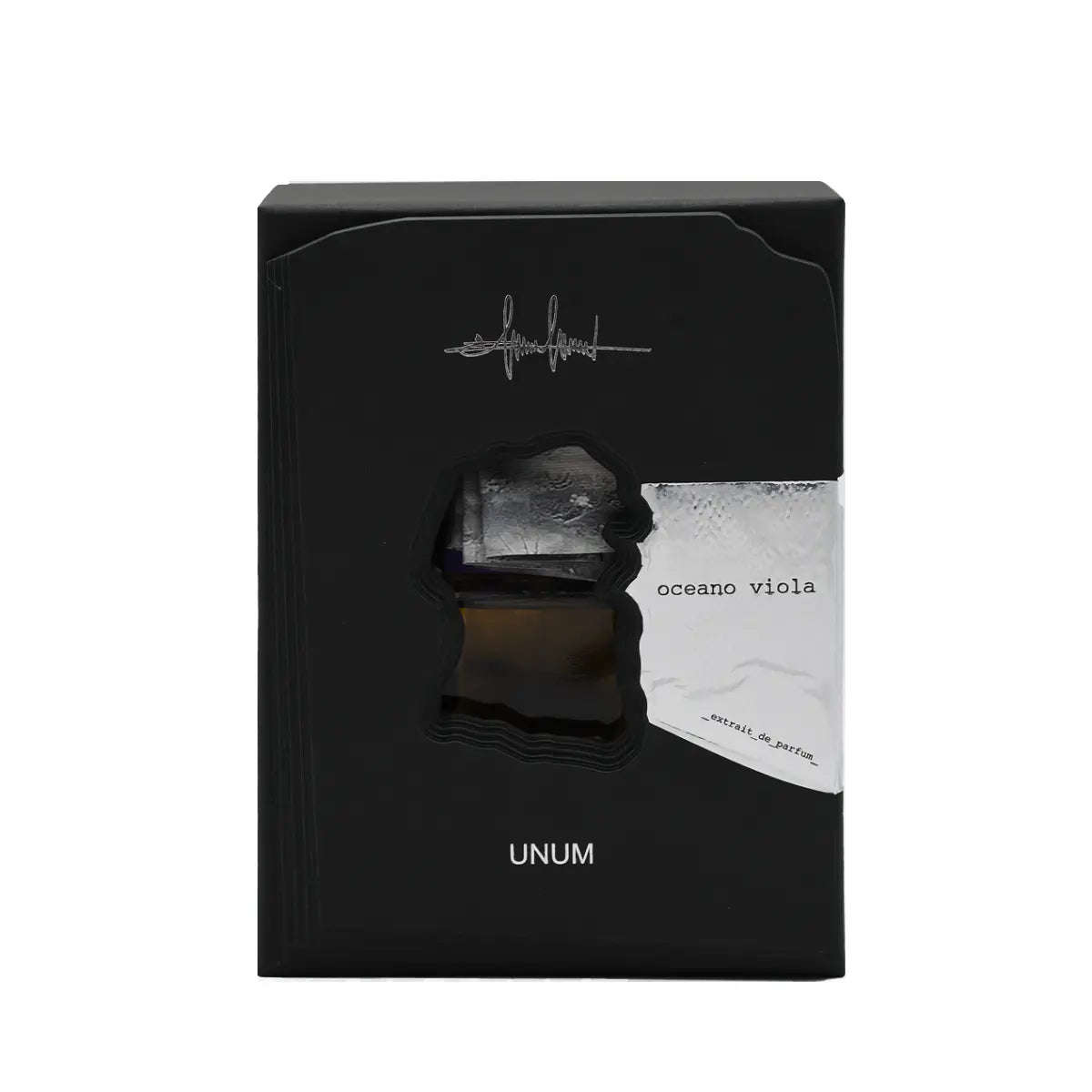Every scent exists within the context of a single intuition:
that every violet leads to truth;
that every slanted rectangle opens a passage;
that every wave treads the threshold between two worlds
without losing its centre.
The violet exists only within.
Every brushstroke is a wound seeking light.
If an ocean is purple, it becomes a cosmic fluid that absorbs, transfigures and transports. If imbued with iris, it becomes Vision. Return. Origin.
Another dimension where every image pulsates with secrets. The purple ocean has the depth of a primordial womb because it welcomes, envelops and shapes. The laws of physics, narrative logic and the conventions of reality dissolve in the current of this dark, purple-reflecting sea: everything floats and vibrates.
Water as an absolute principle
In Scriptures and ancient cosmologies, water is always the first element. This is a theme that Filippo Sorcinelli has already addressed in the Book of Genesis: the Spirit hovers over the waters, foreshadowing every creation (RUAH).
Water therefore takes on a mysterious quality: purple is the ultimate synthesis of spirit and flesh, impulse and contemplation. Purple contains the red violence of blood and the blue distance of the sky. It is the embodiment of the boundary.
The purple ocean offers an archaic, pre-linguistic experience. It is a kind of celestial placenta from which consciousness is reborn, transformed.
Painting, cinema and perfume in a single ritual gesture
At the heart of the third part of Twin Peaks: The Return, the purple ocean emerges as a fluid, luminous cosmic threshold. A sea without defined boundaries. An expanse that vibrates with purple and mystery. David Lynch presents it as the womb of pure consciousness, the origin of being and the dissolution of identity.
In this landscape, time expands. Reality renounces its linearity. Humans float in a liquid universe, crossing a sea of violet light to be reborn elsewhere. Cooper does not enter to get lost, but to access a greater truth. In this vast expanse, there are no clear boundaries: every figure merges and every sound becomes a body. Matter itself becomes a symbol.
This ocean predates all words. Existing as pure vibration, it presents itself as an archetypal image of transformation.
The sea as sky in painting. The sea in the flesh of colour.
In 1993, Filippo Sorcinelli painted two works on wood that appear to emanate from the same frequency. One is a purple sky charged with tension and a layered sea crossed by an inclined rectangle that suspends perspective.
The scene houses a pictorial fragment within itself, as if the vision held another vision.
This unwittingly anticipates Lynch's symbolic montage. The rotated cut in the painting reveals an inner time. It reveals an otherness. Filippo shapes on the board what Lynch will make vibrate on the screen: a consciousness that transcends space by allowing itself to be permeated by depth and access mystery.
The painting welcomes the purple sea as a presence; the material ripples, and colour becomes the flesh of the vision. Each brushstroke engraves the surface with the same force with which Lynch's ocean digs into the soul.
Perfume as a continuation of painting
Oceano Viola is a fragrance that emerges from an established gesture, capturing the essence of the paintings and amplifying the resonance of Lynch's ocean.
Translating that vision into a subtle scent, the fragrance preserves its existence with the dramatic patience of the iris: its rhizome, a horizontal, fleshy root, absorbs time and transforms it into an aromatic memory. Years pass before its scent emerges. It is precisely this long gestation period that gives the fragrance its depth.
The flower fades quickly. The rhizome, on the other hand, endures. It sings of its silent nobility.
It sings without a voice, but with the timbre of contemplative beauty.
In liturgical time, the iris accompanies the gesture of contemplation. In sacred spaces, burnt rhizomes purify the air and the mind.
During the Middle Ages, it was kept next to altars, forming an aromatic bridge between earth and sky. Its fragrance embodies chastity and passion, purity and desire, discipline and vision.
Art has captured its luminous contradictions: in Japanese gardens, the iris suggests balance and grace, while in Van Gogh's paintings, it becomes a desperate and glorious gesture, blooming amidst a sea of questions.
The iris offers depth that both heals and disrupts. It leads to places where inner life can flourish, slowly and quietly, with all the strength of something that has been hidden for a long time.
The symbolism of the bottle
The monolithic bottle mirrors the texture of the torn canvas. The painting becomes surface. Purple becomes skin. The sea can be breathed. The message stuck on the safety pin is carved into the cap, which rests like a living relic. This evokes instability and temporary closure; a wound held together with makeshift means and ambiguous protection. Everything is precarious, double and poorly sewn. Things seem still, but they tremble with tears. The worlds appear united, yet a mere flicker reveals the abyss of pain, as if the human psyche were a torn dress held together by an urgent gesture.
This perfume is born from a single intuition: that every purple sea leads to truth; that every slanted rectangle opens a passage; that every life is sacred and walks on the threshold between two worlds without losing its centre.
Every brushstroke is a wound seeking light. It transfigures whatever it touches. It illuminates everything it touches. It elevates what it embraces, even violently.
Each of its notes speaks the language of the invisible. With iris, the skin is cloaked in mystery and contemplative beauty, seducing silently and inviting us to the threshold of the absolute.

